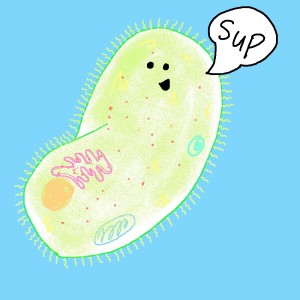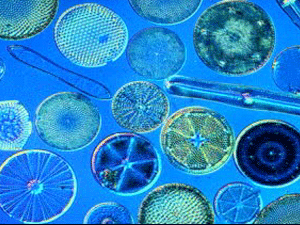Protists: they make no sense
I don’t like having to label things. I don’t mean an actual sticker label–I find that oddly satisfying…




But I don’t like having to take a complicated person or thing and slap a simplistic label on it, perhaps because I especially hate it when this happens to me.

But unfortunately for me, labeling and categorizing things (which should never be confused with actually understanding things) is not only part of human nature, but it’s a big part of biology.
Scientists are usually pretty good at cataloging the diversity of life.

But there are times that our human system for organizing and cataloging the diversity of life doesn’t work as well, and I, with my anti-label sentiment, take glee in it.

Meet the Protists.

Protists are eukaryotic–they have a nucleus, but they don’t fit into any of the other eukaryotic filing cabinets known as animals, plants, and fungi. If a creature with a nucleus isn’t any of those, it’s a protist. For this reason, Kingdom Protista is occasionally called the “junk drawer kingdom.”
Here are a few examples of protists:





They’re not grouped based on what they are; they’re grouped based on what they’re not.
But it’s okay. Protists don’t mind. They are proud to be what they are–the weirdest kingdom of all. They actually represent the ancestors of all the more recognizable eukaryotes–plants, animals, and fungi. That’s why this kingdom is so very random: it’s evidence of the evolutionary tinkering that brought about modern multicellular life. Some protists are even referred to as “animal-like,” “plant-like,” and “fungus-like,” lowering scientists to the valley girl level.

Perhaps the most infamous protist of all is plasmodium, the protist that causes malaria. It’s mosquitos that spread the protists around, but the disease is caused by plasmodium. That jerkface.
Regarding classifying protists, never forget that our system of classifying and naming living things is just our human brains trying to make sense of a vast and complicated natural world that does not want to be made sense of. Translation: we try to place order over nature, but it doesn’t always fit quite right. Plants and animals fit into nice little boxes with all their similar traits, and bacteria are unmistakably bacteria. But protists… They laugh at our pathetic attempts to define them. So it’s not really that they make no sense, as the title of this post says, but rather that we can’t make sense of them. And that is why I love them.











